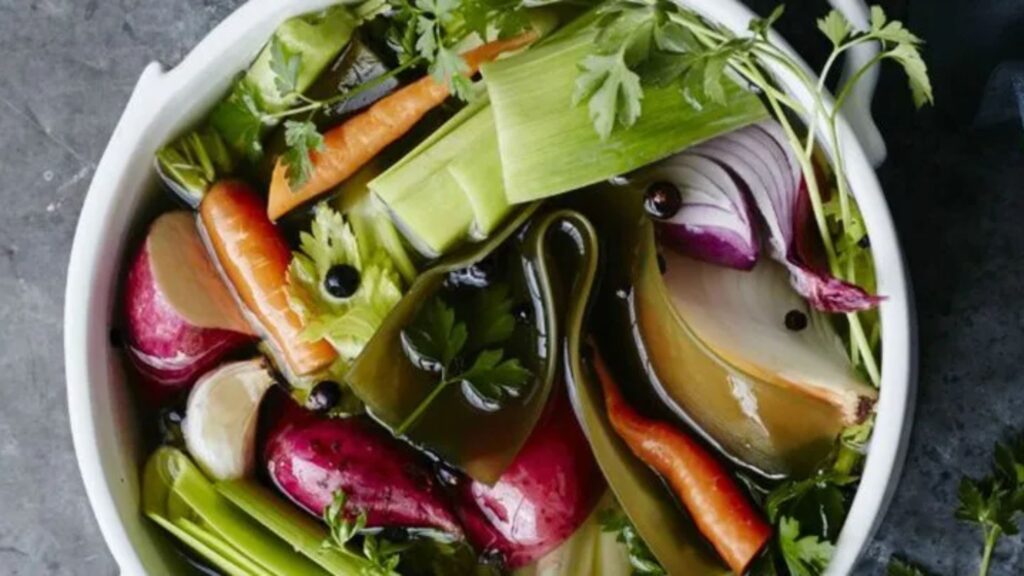Demystifying Bone Broth: A Nutrient-Packed Elixir for Wellness

Bone broth has surged in popularity in recent years, touted for its numerous health benefits and rich flavor. But what exactly is bone broth, and how can you incorporate it into your diet? In this comprehensive guide, we’ll delve into the world of bone broth, from its humble beginnings to its modern-day resurgence as a superfood staple.
The Basics of Bone Broth
At its core, bone broth is a savory liquid made by simmering animal bones and connective tissue for an extended period, typically 6-12 hours or more. This slow cooking process extracts valuable nutrients, including collagen, gelatin, amino acids, and minerals, resulting in a nourishing elixir known for its gut-healing, joint-supporting, and immune-boosting properties. Ingredients Matter: Quality Counts When making bone broth, the quality of ingredients matters. Opt for bones from grass-fed, pasture-raised animals whenever possible. These sources tend to yield broth with higher nutrient content and superior flavor. Additionally, organic vegetables can enhance the nutritional profile of your broth. While peeling isn’t necessary, thorough washing is crucial to remove any dirt or debris. Whole vegetables, such as carrots, onions, and turnips, are preferred, as they retain more nutrients during cooking compared to their pre-cut counterparts.
The Art of Simmering
Simmering is a critical step in the bone broth-making process. After bringing the broth to a gentle boil, reduce the heat to a simmer and skim off any impurities that rise to the surface. This ensures a clear, flavorful broth without compromising its nutritional integrity. Flavor Enhancers and Seasonings Experimenting with different herbs, spices, and vegetables can elevate the flavor profile of your bone broth. While classics like garlic, shallots, and leeks add depth, it’s essential to avoid sulfur-rich vegetables during the initial cooking stages, as they can impart an unpleasant taste and aroma to the broth. Save these ingredients for later additions, such as when enjoying the broth as a meal or adding them to dishes.
Making Bone Broth:
A Labor of Love Making bone broth is a labor of love that requires time and patience. Whether you choose to simmer it on the stovetop, in a pressure cooker, or a slow cooker, the key is allowing ample time for the flavors to meld and the nutrients to extract fully.
A recipe we will share here, is for Magic Mineral Broth, a nutrient-rich alternative to meat-based broths created by chef Rebecca Katz. Packed with essential minerals and crafted from organic vegetables and herbs, it’s a delicious addition to any diet, offering versatility and nourishment in every sip.
The Hacks:
Store-Bought Options For those who prefer convenience without sacrificing quality, several reputable brands offer ready-made bone broth options. Look for products made from high-quality ingredients, preferably from grass-fed sources and free from additives or preservatives. While store-bought broth may not rival homemade in terms of flavor or nutrient content, it still provides a convenient way to enjoy the benefits of bone broth when time is of the essence.
Conclusion:
Embracing the Benefits of Bone Broth In conclusion, bone broth is more than just a culinary trend; it’s a time-honored tradition with a host of health benefits. Whether you choose to make it from scratch or opt for a store-bought version, incorporating bone broth into your diet can be a delicious and nutritious way to support overall wellness. So next time you’re craving a comforting bowl of soup or looking to add depth to your favorite recipes, consider reaching for a nourishing cup of bone broth. Your body will thank you for it!
MAGIC MINERAL BROTH 2.0
updated with herbs & spices for The Longevity Kitchen
INGREDIENTS
Makes 6 quarts
1 fennel bulb, plus tops
2 unpeeled yellow onions, cut into quarters
6 unpeeled carrots, cut into thirds
1 leek, white and green parts, cut into thirds
1 bunch celery, including the heart, cut into thirds
2 unpeeled sweet potatoes, washed and cut into chunks
1 garnet yam, washed and cut into chunks
1 large bunch fresh, flat-leaf parsley
6 sprigs fresh thyme
12 large cloves unpeeled garlic, cloves smashed
3 inches unpeeled ginger, cut in half, lengthwise
1 8-inch strip of kombu
12 black peppercorns
4 juniper berries or allspice berries
2 bay leaves
8 quarts cold, filtered water
1 teaspoon sea salt
DIRECTIONS
Rinse all the vegetables well, including the kombu. In a 12-quart or larger stock pot, combine the onions, carrots, leek, celery, sweet potatoes, parsley, thyme, garlic, ginger, kombu, peppercorns, juniper berries, and bay leaves. Fill the pot with 8 quarts of water, cover and bring to a boil.
Remove the lid, decrease the heat to low and simmer,
uncovered, for 2 to 4 hours. As the broth simmers, some of the water will evaporate; add more if the vegetables begin to peek out. Simmer until the full richness of the vegetables can be tasted.
Strain the broth through a large, course-mesh sieve (remember to use a heat-resistant container underneath), then add salt to taste. Let cool to room temperature before refrigerating or freezing.
Variation: For an extra immune boost, add 8 shitake mushrooms to the stock and/or a six inch piece of Burdock root, washed and cut into quarters.
NOTES
Store refrigerated in an airtight container for 5 to 7 days or in the freezer for 4 months.
Balancing the broth: A spritz of lemon juice and some sea salt, about 1/8 teaspoon of each per cup, does a lot to bring this broth to life.
Like fine wine, this broth gets better with age. A longer simmer will increase the broth’s taste and nutrient density. You can also cut the recipe in half and make it in a slow cooker.
Recipe Source: https://thechalkboardmag.com/the-healing-kitchen-magic-mineral-broth





